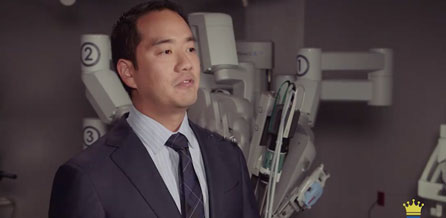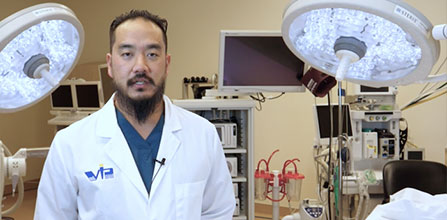Comparing Robotic vs Traditional Laparoscopy – Dr. Tsuda’s Perspective
I began performing robotic-assisted surgical procedures about six years ago. I was initially very skeptical of the robot. Since I was fellowship-trained in minimally invasive surgery, which at that time was primarily laparoscopic surgery, I was very confident in my skill set and the advantages that laparoscopy offered the patient. Laparoscopy is the use of small instruments, through small incisions, in performing operations that would otherwise require a large incision to access the patient’s abdomen. We found, first through procedures such as gallbladder removal, that the small incisions provided less pain, quicker recovery, better cosmetics, and fewer complications that traditional open surgery. It does require certain skills, however, since using long, thin instruments takes away the tactile feel of the surgeon’s hands, forces us to look at a two-dimensional screen instead of directly at organs and tissue, and requires quite a bit of manual dexterity.
I worked at it, however, and became confident; even winning a fun type of competition at one of our national surgical meetings that pitted surgeons against each other in a laparoscopic simulator. So, when robotic surgery started to be introduced to us, the idea of adding expensive, bulky, and technical equipment that was touted to improve our dexterity and skills seemed unnecessary.
I was wrong about robotic surgery.
Despite initial skepticism, my scientific mind required that I at least investigate before discounting this new technology. I became trained on the surgical robot and performed my first procedures shortly thereafter. What I found surprised me: the robot does require skill; it does not supplant skill in the surgeon. With patience and time, the advantages were clear.
Robotic surgery’s primary advantage, to me, was the ability to articulate the tips of instruments in any direction that I needed. Laparoscopic instruments are mostly like dinner tongs – they are straight, long, and they only open and close. Robotic instruments are wristed: whatever my wrists, hands, and fingers do, they do.
The visualization was also superior. Since the robotic camera is three dimensional, I was able to see within the patient’s abdomen with new clarity and depth perception. These, along with other computerized enhancements such as warning systems, tremor control, and infrared vision, made robotic-assisted surgery a clear choice for me.
Robotic surgery does not serve as a crutch for an experienced laparoscopic surgeon, but rather as an augmentation of skills using the best of modern technology.



